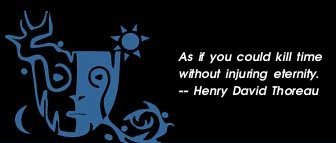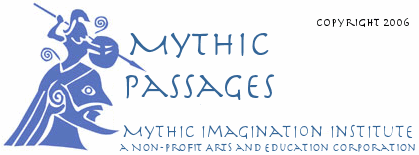

New Beginnings:
Hope for the Future
By Michael Karlin
President — Mythic Imagination Institute
January is a time of new beginnings, pure potential, and emergence. January is a time for creation and a time for hope.
Yet in our modern world, we are bombarded daily with horrific headlines from TV, radio, newspapers, and the Internet. Famine,
murder, war, terrorism, crime, genocide, malaria, poverty, global warming, natural disaster, some days it feels like that is all we
see or hear. How do we go on in the midst of so much horror? Where do we go from here? Where is the good news? Where
is our hope?
Children are a perfect representation of the pure potentiality represented by the New Year. They seem to live every
moment in the present, fully creative and fully free. In their innocence, they can imagine a world full of miracles and joy, and in
this innocence lies a prayer for a better tomorrow.
This idea is wonderfully illustrated in a story told by the
Maggid of Dubno
in the 18th Century. There was a large family that lived in a village in a clearing in the forest. The parents loved their children very
much, and wanted to protect them from all of the possible dangers of the world. Every night before bed, the father locked the house
up tight, securing all of the windows and barricading. "You can never be too safe!" he would say to himself proudly.
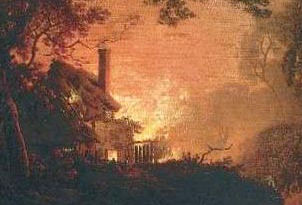
One night, the parents awoke to the terrifying smell of smoke. The smoke was filling the house. They quickly jumped out of
bed and went room-to-room gathering all of their children. When they got to the front door, they couldn't get out. It was stuck.
The parents desperately ran to each window to find an escape, only to find that each was also stuck as if locked from the outside.
They did not know how they were going to get out of the house rapidly filling with toxic smoke and fire. The youngest child yelled
to his father that he had found a small opening in one of the windows. Unfortunately, the opening was far too small for anyone in the
family to fit through, except for this youngest little boy. The father quickly lifted the child through the window, and he ran into the
village to get help. Moments later a group of people came back to the house and using a battering ram, smashed down the front door
and saved the family.
The Maggid concludes the story by saying that, just as sometimes the smallest child can fit through the cracks of the house to save
the whole family, so too do the prayers of children fit through the cracks of Heaven to reach God to save us all.
Yet every terrorist was once a child. Their freedom, creativity, and pure potentiality can also be turned into evil. Children are
not the hope of the future, unless we nurture them, love them, and teach them to see the world, not simply perceive it.
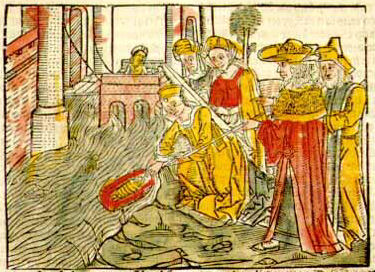
There is a great story in Western mythology that most of you are very familiar with, but it is quite instructive. It is the story of
Moses' birth, early years and finally his saving a Jewish slave who was being beaten to death by an Egyptian. In the Torah, the entire
story from Moses' birth until this scene only comprises twelve sentences, and in those twelve sentences forms of the verb "to see"
are used six times, and many times in unusual ways. Why is "to see" so important to this story? Rabbi Ed Feinstein has a very interesting
interpretation of this story. All of the essential characters in this short story had an ability to see beyond what they were being told by
their society and its leaders. When Moses was born, his mother "saw that he was good," and did not allow him to be put to death,
which was Pharaoh's order for all male Jewish babies at that time. Pharaoh's daughter spied the reed basket floating in the Nile,
saw the Hebrew child inside, and chose to save him and raise him in the Royal Palace, despite the orders of genocide by her own
father.
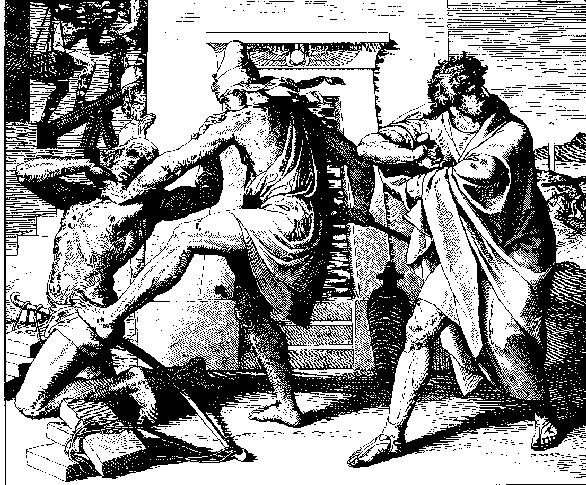
Finally when Moses himself, perhaps the foundational mythic figure in the struggle for human rights, encounters a slave being
beaten, he is shocked and looks from side to side to see if anyone sees what is happening. While every Egyptian of that day looked out
upon the landscape and saw tremendous economic prosperity and progress: buildings, pyramids, temples being built all around —
Moses saw the human impact, the slavery, brutality, and genocide, despite having been raised in the royal palace with power and wealth.
(The similarity with Siddhartha from Buddhist mythology is striking). Similarly today, many people walk into our mega shopping stores and
see prosperity, cheap prices, all the goods you could ever want! Others see the unfair working conditions, child labor, sweat shops,
and inequitable distribution of wealth that enables that "prosperity." We must seek to teach our children to understand the myths
within which they live, and to see the world as it is. It has been said that prophecy is seeing the world as it really is. Let's teach our
children to be prophets.
We take our commitment to children and K-12 education very seriously at Mythic Imagination. This year, for the first time, we
will be holding a special Educators pre-conference on the day before Mythic Journeys
for K-12 educators. This pre-conference will be an opportunity for the educators to meet each other, exchange ideas, participate in
workshops, and hear talks by leading figures in myth and education such as Michael Meade,
Maren Hansen, Victor Kazanjian,
and Anne Ostholthoff. After this pre-conference, the attendees and presenters
will join the rest of us at the main Mythic Journeys conference.
Also, last month we launched a very special program called
Myth for Kids, a new section of our website dedicated to stories, myths, folktales, activities, and games for children. The site is in its
infancy (pun intended), and we would love your feedback, ideas, and suggestions to make it more robust, educational, and fun. Please
consider this space a playground where you can help us build the best site for kids to learn to see. Please send your ideas to
info@mythicjourneys.org.
As we move into this time of year of new beginnings and think of our children, the hope for the future, let us also remember
that in order to stem the tide of greed and hate in the world, we must each make the changes in our own lives towards peace.
As Gandhi said, we must be the change that we want to see in the world. In the end, we are the hope.
Return to Passages Menu
Subscribe to the Passages e-newsletter
|
